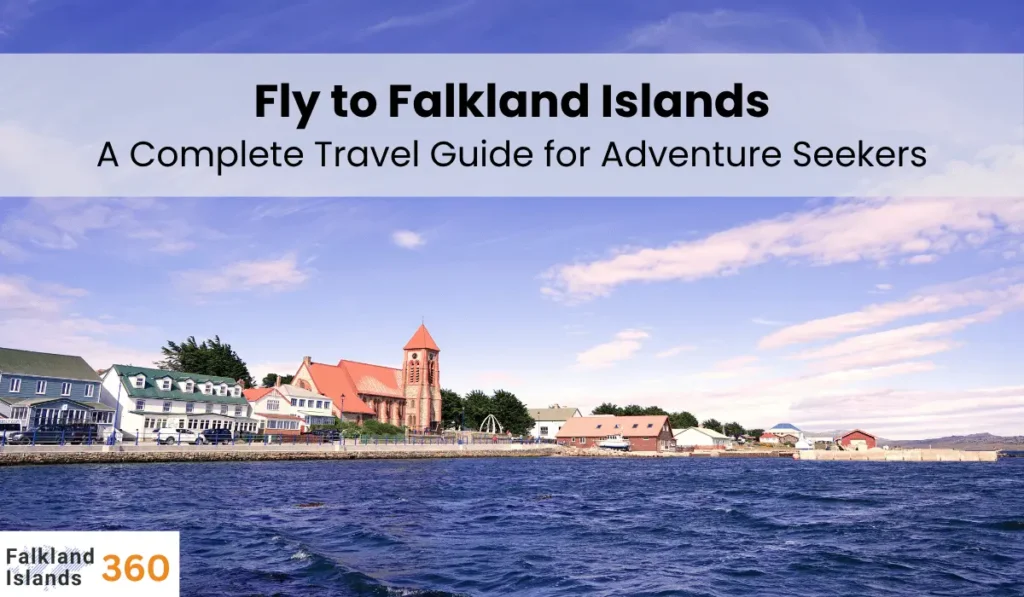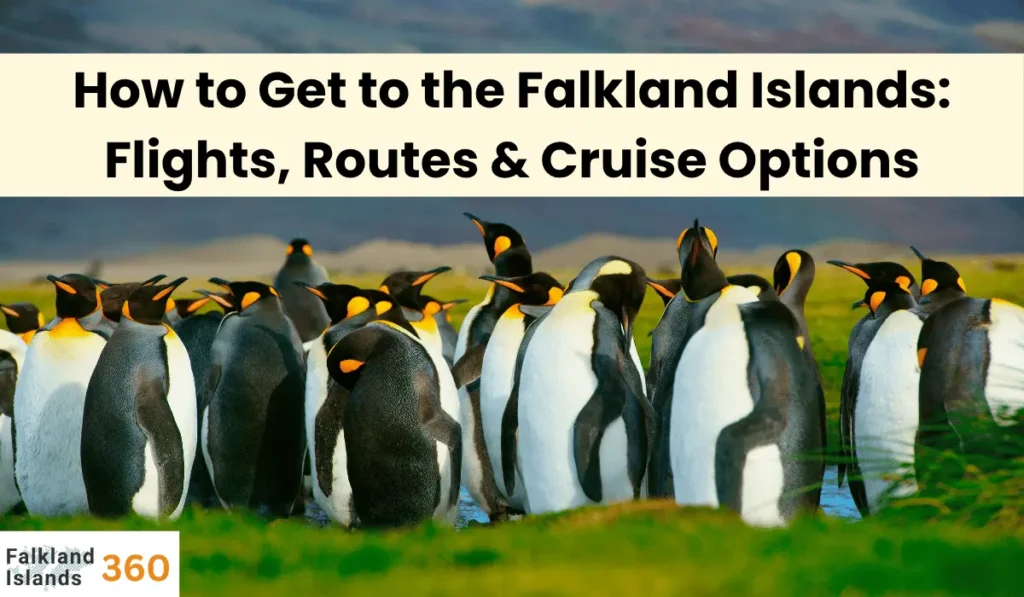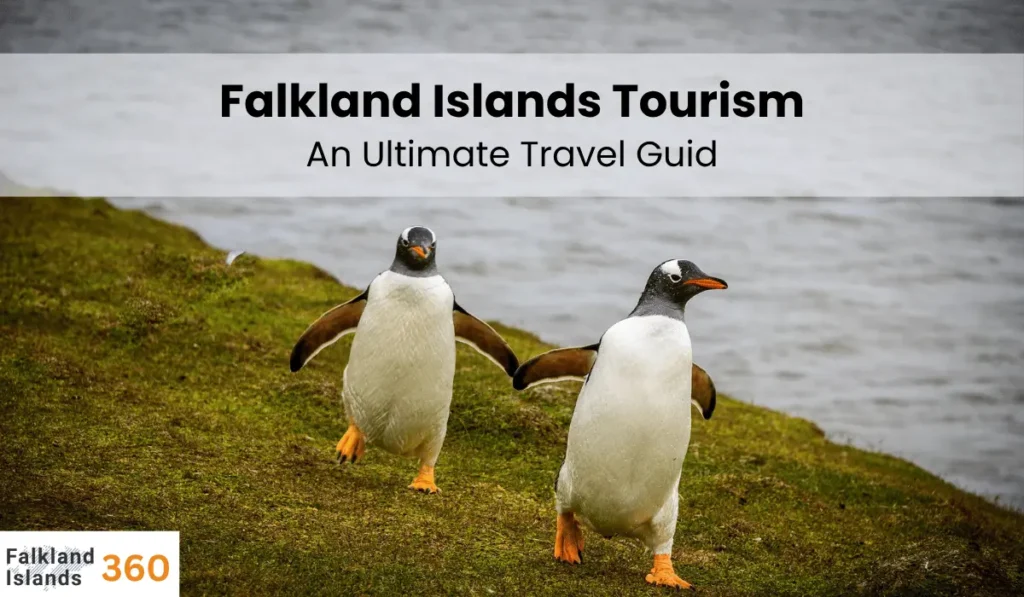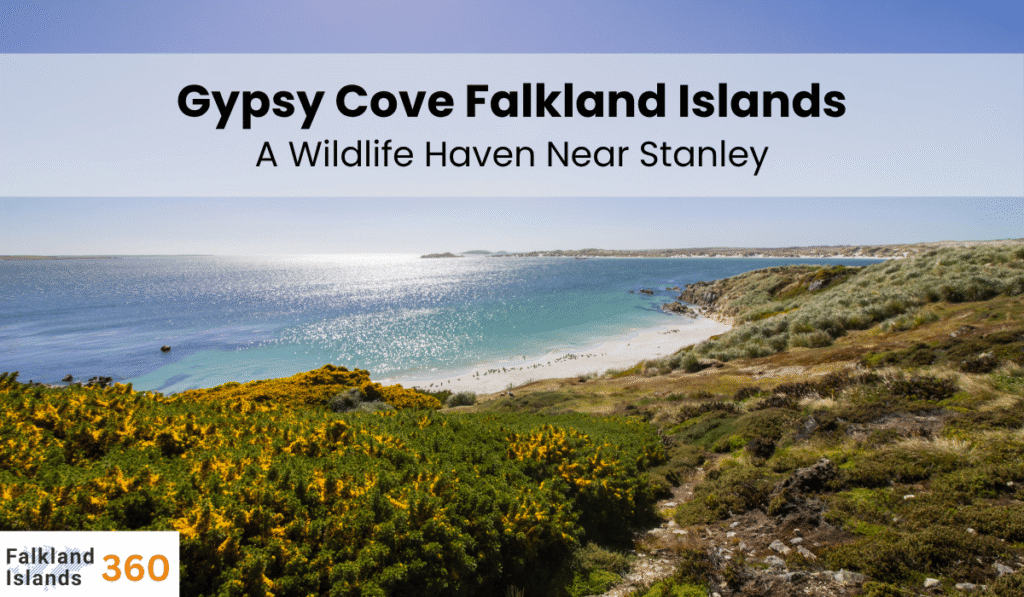Dreaming of remote wildlife and rugged adventures? Pack your bags and fly to Falkland Islands, a stunning British Overseas Territory in the South Atlantic. This guide covers how to reach the Falklands, what to do there, the best seasons for travel, and essential tips.
Whether you’re a British tourist craving a familiar feel or an expat seeking an offbeat journey, learning how to fly to Falkland Islands is your first step to an unforgettable trip.
Getting to the Falklands
Flying to the Falklands is more convenient than you might think. A weekly LATAM flight leaves Santiago (Chile) every Saturday via Punta Arenas, and even stops in Argentina once a month. From the UK, two weekly RAF flights operate from RAF Brize Norton (Oxfordshire) with a refuelling stop at Ascension Island. These flights take about 18 hours including the stop, so plan accordingly and savor the long haul flight as the start of your adventure. All flights land at Mount Pleasant Airport (MPN) on East Falkland, where you can catch a bus to Stanley or meet your tour operator.
Tip: Book early! Peak summer seats fill up fast, and fares from London can be pricey (around £2000), so look for deals or consider flying via Chile for a cheaper route. Cruises are another option – dozens of Antarctic or South America cruises include the Falklands, giving you a chance to arrive by sea while still flying home.
Once you fly to Falkland Islands, getting around is part of the fun. Stanley, the capital, is small and walkable. Outside Stanley, rugged 4×4 tracks connect remote farms and beaches. If you want to hop between islands, a fleet of tiny FIGAS (Falkland Islands Government Air Service) planes zip you to outer islands like Carcass or Sea Lion Island. Keep in mind that all travel must be booked ahead – the islands have no car rental and limited ferries.
Top Attractions and Adventures
After you fly to Falkland Islands, the wildlife is the main attraction. The islands are a paradise for nature lovers: five penguin species, four seal species, albatrosses, and even elephant seals thrive here. Wildlife-viewing tours, boat safaris, and easy walks let you get up close. For example, a Magellanic penguin colony is just a 10-minute drive from Stanley. On boat trips or at places like Sea Lion Island, you can spot orcas, whales, and playful sea lions. Adventure travelers will love hiking and kayaking amid this pristine nature. Good hikes include walking to the Cape Pembroke lighthouse near Stanley or tackling rugged trails across East and West Falkland. Guided kayaking and sailing tours let you explore hidden bays and even fish for sea trout.
Top things to do:
- Wildlife Watching: Visit penguin rookeries, birdwatch (Falklands have 70+ bird species), and see elephant seal colonies.
- Hiking & Nature: Explore gentle trails like Stanley’s hill or all-day hikes on uninhabited islands. You truly can feel alone with nature here.
- History & Culture: Stroll Stanley’s colorful streets filled with red phone boxes and traditional pubs. See Christ Church Cathedral and the iconic Whalebone Arch. Visit war memorials and museums, like the Falkland Islands Museum, to learn about 19th-century life and the 1982 conflict.
- Island Hopping: Take small planes or boats to the outer islands. Pebble Island is famous for sighting all six penguin species; Sea Lion Island has waving elephant seals and whales offshore. Carcass Island is a birdwatcher’s haven, free of rats.
- Angling & Boating: The Falklands are world-class for fishing (sea trout, cod) and sailing. Adventurous anglers from the UK and beyond come here especially in shoulder seasons.
In Stanley, you’ll find cozy hotels, a couple of lively pubs (try the Malvina House or the New Haven for local lager), and friendly locals (they even have a May Fair!). The town has a very British feel – driving is on the left, prices in pounds (Falkland Islands pounds, equal to GBP), and everyone speaks English.
Best Time to Visit
The best time to fly to Falkland Islands is in the Southern Hemisphere summer, roughly November through March. This season has milder weather, longer daylight, and the most wildlife activity (fluffy penguin chicks, breeding birds, etc.). Peak season is December–February. Spring (Sept–Nov) is exciting too: penguins arrive to nest, elephant seals give birth, and flowers bloom. Autumn (March–May) brings quieter landscapes and good fishing. Winter (Jun–Aug) is off-season; some businesses close and weather is cold and windy. If you travel in summer, book accommodations and flights early.
No matter when you go, pack for cool, changeable weather. Even in summer, expect wind and rain. Layers are a must – think windbreaker, fleece, hat, and sturdy boots for hiking. Don’t forget sunscreen: the Falklands can be surprisingly sunny due to ozone thinning.
Travel Tips for Adventurers
- Entry Requirements: British passport holders don’t need a visa – you get a 1-month stay permit on arrival (extendable). Visitors just need a valid passport, proof of onward travel, and funds. No hassle, but carry travel insurance – medical facilities are very basic.
- Money: The currency is the Falkland Islands Pound (equal to GBP). Most places accept cash or local credit cards. ATMs are only in Stanley – plan your cash for remote islands.
- Connectivity: Internet and cell service are limited outside Stanley. Enjoy unplugging! Stanley has Wi-Fi cafes and decent signal.
- Local Customs: Falklanders are very friendly and English-speaking. Tipping is not expected. Wildlife rules are strict: keep distance (no feeding or chasing animals) and follow the island code for boots and biosecurity to protect local nature.
- Getting Around: There are no rental cars. Tours often include transport. If you venture on your own, consider hiring a Land Rover with a guide to explore safely.
- Health: Carry any medications and a first-aid kit. See a travel clinic if you plan to trek far. Drinking water is safe from taps in Stanley.
- Flight Logistics: Check flight schedules carefully. RAF flights sometimes change last minute. Book connections with plenty of slack. For LATAM flights via Chile, you’ll need to clear Chilean customs at Punta Arenas, then re-board.
Conclusion
Ready to fly to Falkland Islands and start your adventure? These windswept islands reward visitors with wild landscapes, curious wildlife, and heartfelt hospitality. Whether you’re exploring penguin colonies by kayak, hiking empty beaches, or sipping tea in a cozy Stanley cafe, the Falklands feel like a world apart. Just remember to fly to Falkland Islands prepared for adventure: dress in layers, expect wind and changeable skies, and bring your camera. Adventure seekers and nature lovers alike will cherish the memories here. The Falklands are calling – and you’ll be glad you answered.
FAQs about Flying to the Falklands
How can I fly to Falkland Islands?
You can fly via Santiago, Chile on LATAM (weekly service, with stop at Punta Arenas). From the UK, book the RAF Brize Norton charter (planes on Sundays/Wednesdays, returns Tuesdays/Fridays). Book through the Falkland Islands Government office in London or travel agents.
When is the best time to fly to Falkland Islands?
The best time is late spring to summer (November–March). That’s when wildlife is most active and weather is warmer. Shoulder seasons (Sep–Nov, Mar–May) still offer great experiences with fewer crowds.
Do I need a visa to fly to Falkland Islands?
No visa is required for most visitors including UK and EU nationals. You get a visitor permit (usually 1 month) on arrival at Mount Pleasant Airport. Just have a valid passport and proof of onward travel.
Which airlines fly to Falkland Islands?
The only civilian airlines are LATAM (from Chile) and the UK’s military AirTanker flights. There are no commercial flights from Argentina or other countries right now.
Are flights to Falkland Islands expensive?
Flights can be costly, especially from the UK. LATAM offers fares from about US$500 round-trip from Punta Arenas. From the UK, expect around £2000 return. Booking well in advance and checking Chilean routes can help save money.




